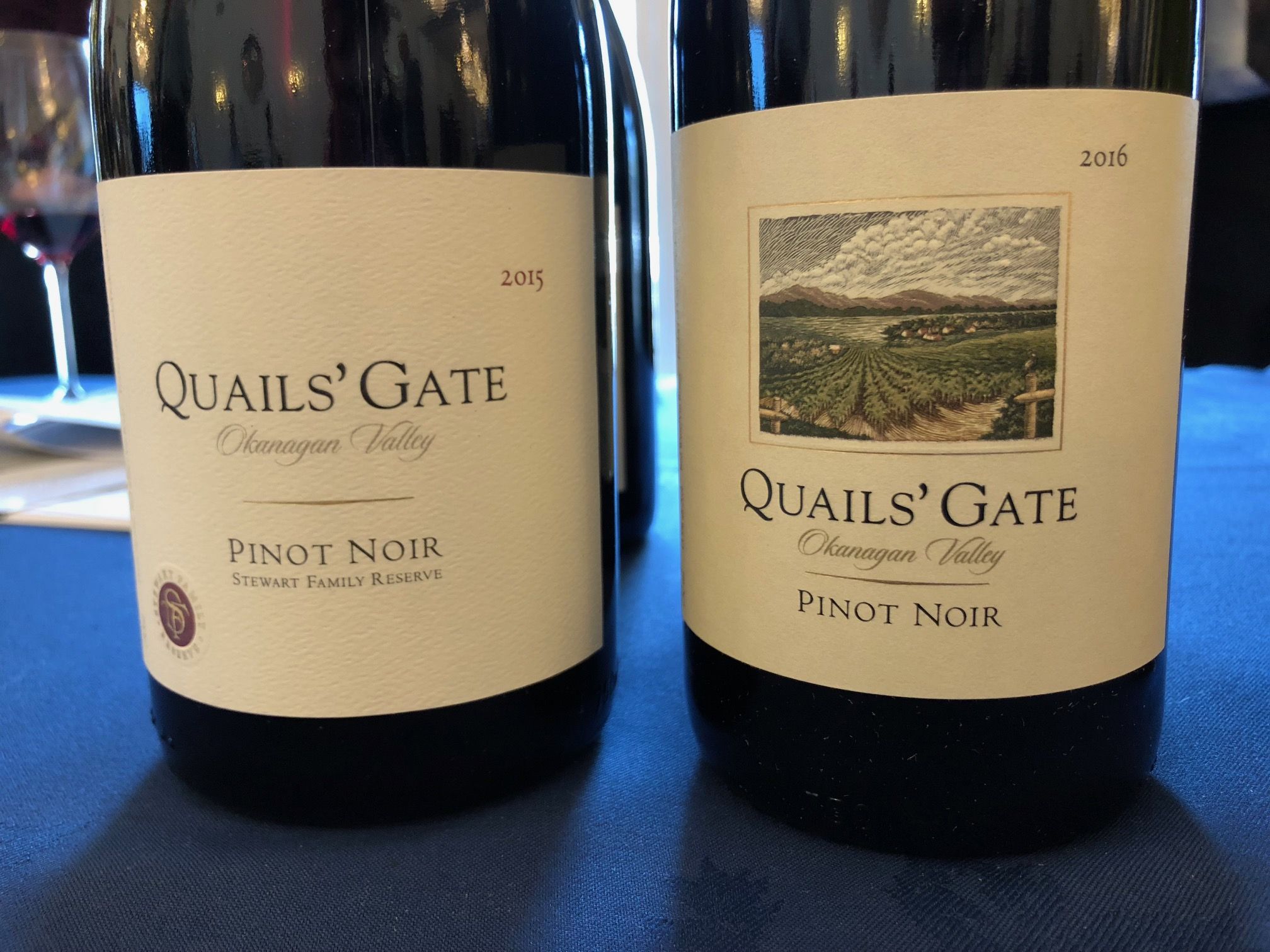The apple did not fall far from the tree with Rob Symington. He not only looks like his father, Paul, but he sounds like him too. Particularly when talking about the passion, the dedication and the support the whole family has for the hard working people of the Douro Valley and Porto where the family has made its name since 1882.
My initial thoughts when hearing him talk about the ambitious plans he has for the company, and, in particular, the desire to use its world famous Port brands to help continue to build its already impressive still wine portfolio, is the reassurance the Symington’s name is going to be at the forefront for battling for and promoting the Portuguese and Port wine industries for many years to come.
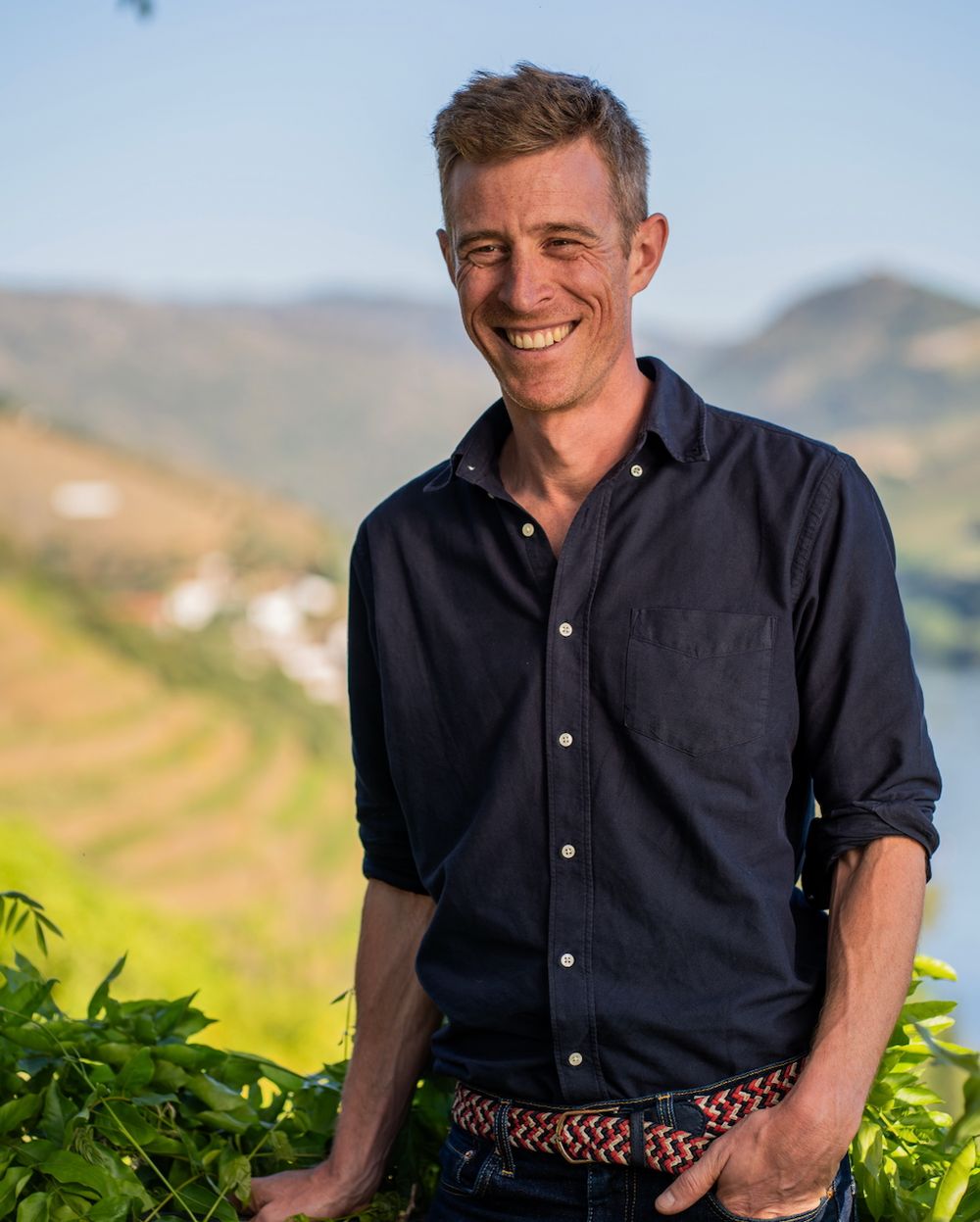
Rob Symington has been working as part of the family business since 2017 and has now taken on the co-chief executive role with Charles Symington
It is testimony to the typically forward thinking approach of the Symington family that Rob has been given the opportunity now to take the reins in a new co-chief executive role alongside his cousin Charles Symington, formerly head winemaker for the group.
For once you reach the age of 65 the family rule is you have to retire and pass the business to the next generation. A point of principle which saw Johnny Symington retire earlier in the year from his chairman role and pass the role to his cousin, Rupert, who steps up from chief executive. Paul Symington retired as joint managing director in 2018 when he too turned 65.
There is no danger of a Logan Roy-type figure at the Symingtons dominating all and sundry and upsetting the family’s Port vats.
“We have been planning for this for a few years so it is has been a gradual process,” explains Rob Symington.
The new family structure is all about playing to each others’ strengths with Rob identified as the best person to manage the company’s commercial strategy, as well continue to steer its industry leading sustainability strategy - that saw it become a B Corp business as long ago as 2019, the first wine producer in Portugal to do so - and build its wine tourism opportunities. Charles Symington will continue to manage wine production.
The family team now includes six other members of the fifth generation - Charlotte, Harry, Anthony, Vicky, Teresa and Hugh - who work across the company’s marketing, sales, and wine tourism operations.
“It is all very collegiate,” he stresses. “We are all in this together.”
There are also regular, daily if need be, “check ins” with his dad to “sound check” ideas and initiatives.
“There have not been any real big shocks taking on the role,” he says.
Head space
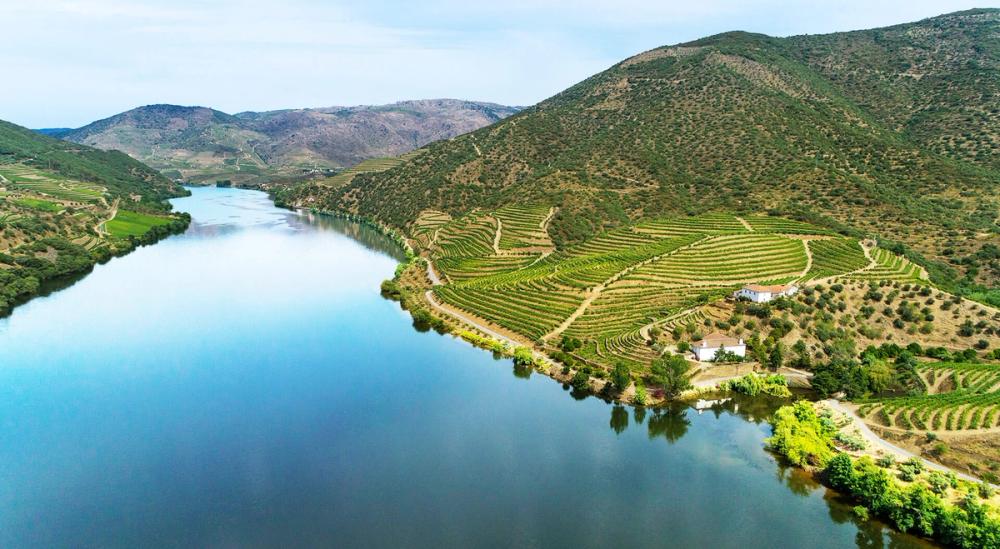
The Symingtons home and main family business is still very much embedded in the Douro Valley but it has now expanded its winemaking to Alentejo and Vinho Verde and England with the co-purchase of Hambledon with Berry Bros & Rudd
The biggest direct change has been “stepping away from the operational side of sales and marketing” to give him more time to look at the “bigger picture”. “It has given me a bit more head space,” he adds.
There are certainly a fair few issues to get his head around, particularly locally in the Douro Valley and the increasing issue of climate change and the ability to grow grapes in what are increasingly hostile conditions. Particularly if you are responsible for largest area of prime A rated vineyards in the Douro Valley, covering 25 quintas, 2,500 hectares and over 1,000 hectares of vineyards.
It is partly the reason why the family looked, as far back as 1999, to “pivot” away from the Douro and invest in and buy vineyards and properties in other key Portuguese winemaking regions. It is also now joint owners of English sparkling wine producer, Hambledon, with Berry Bros & Rudd.
Whilst its still wines currently make up 15% of the company’s turnover – with 10% from wine tourism and 75% from Port – they are growing fast and have doubled their sales in the last 10 years and he expects them to increase by another 50% by 2030.
Rob Symington summarised the three areas where the family is now making wine in Portugal: the Douro Valley; Alentejo; and Vinho Verde.
Areas it believes have the potential to grow the grape varieties and make the wine styles that people are going to want to drink in its main markets around the world in the coming decades.
It has been making wine in Alentejo since 2017 when it took over Quinta da Fonte Souto, the family’s first property outside the Douro. Situated in a cooler, higher altitude area of the typically hot conditions usually found in the Alentejo, it farms around 43 hectares of vines, situated at 490-550m on a 207 hectare property.
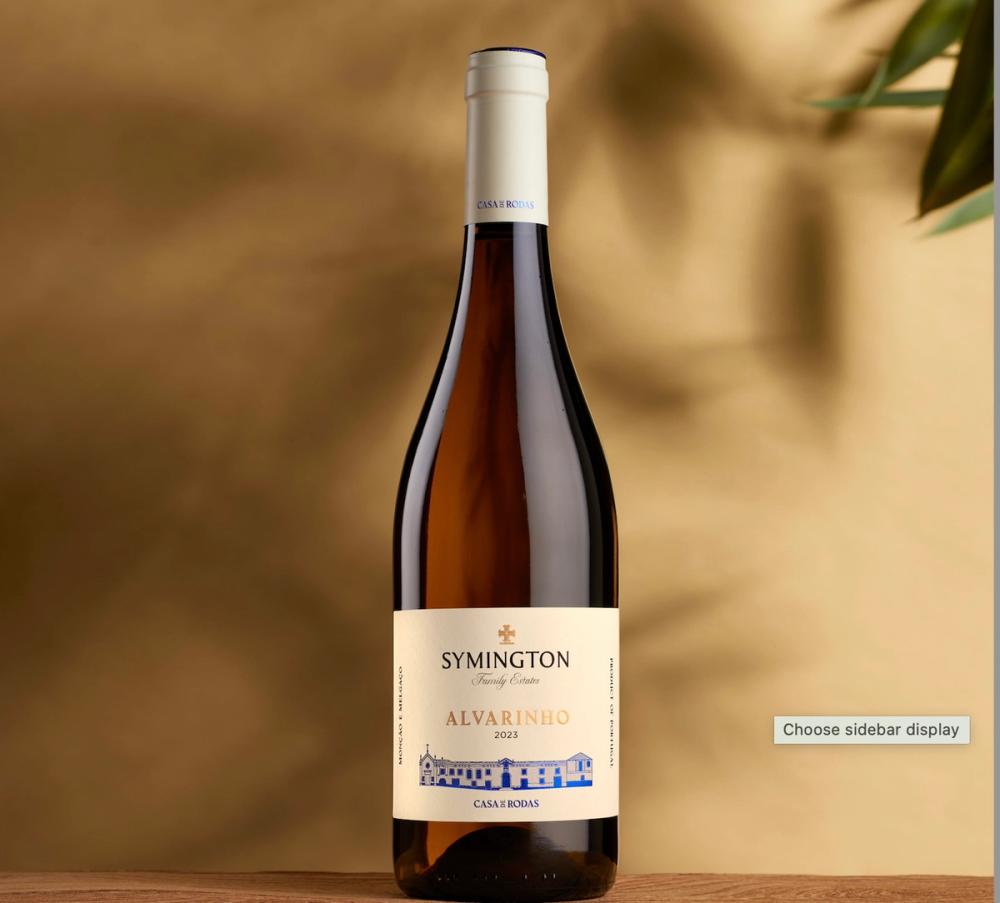
Casa de Rodas Alvarinho 2023 is the Symingtons' first wine from Vinho Verde made in partnership with Anselmo Mendes
Its Alentejo vineyards were chosen thanks to their altitude and the chance to grow grapes in a mountain climate- similar to the terrain it is used to in the Douro.
Its Vinho Verde operation followed in 2022 with the purchase of Casa de Rodas and its 27 hectares of vines, in a joint venture with Anselmo Mendes to produce and distribute wines from the estate as well as the Contacto brand. It was at ProWein in March to show the first release from its estate - an Alvarinho 2023 - that come from the promising Monção and Melgaço sub-regions.
A wine with the acidity and freshness that are very much in demand in its key markets such as the UK, US and the Norics, says Rob Symington.
“We now have a still wine range that reflects the best of what Portugal can do,” he adds, pointing to the diversity of wines you can get from the Douro, Alentejo and Vinho Verde.
“Now it is the time to consolidate what we have invested in.”
Port risks and opportunities
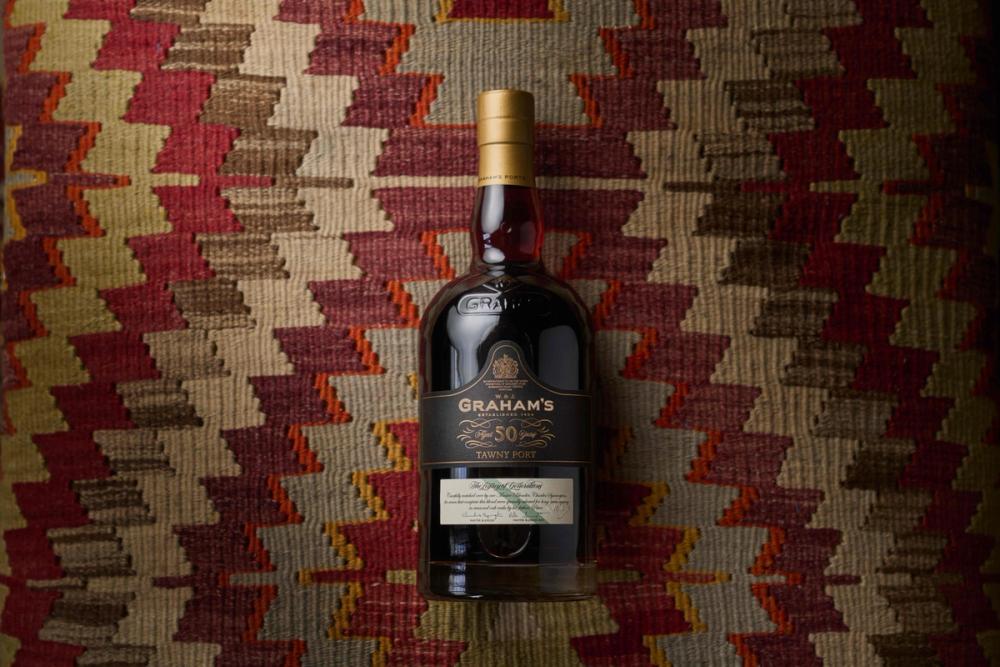
The Symingtons are looking to capitalise on the history and traditions of Port with the release of 50-year-old and 80-year-old Graham's Ports
With four of the biggest Port brands in the market - Graham’s, Dow’s, Warre’s and Cockburn’s - theSymingtons have got a big responsibility to get their Port growth strategy right.
For Rob Symington that means exploring and expanding the opportunities it has to introduce more premium Port products whilst also reaching out to new drinkers with different drinks and occasions where Port can be served, like with cocktails and innovative pairings.
It is very aware, he says, how much it needs to adapt and move to keep ahead of challenging trading conditions that has seen the Port category hit hard and fast by the ABV-driven duty changes in the UK and price increases that have come as a result of rising costs in Portugal.
He describes the situation in the UK as: “We need to find the balance between increasing prices to protect margins without affecting our volumes.”
Cockburn's Special Reserve, for example, the UK’s best-selling Port, that was retailing at around £12 is now up to £14.50 with any discounts still keeping the price above £11.
Whilst the UK remains a hugely significant market for the Symingtons it is not where it is relying on getting its major new growth from.Although France, Belgium and the Netherlands account for around 50% of all Port sales, the main growth markets are Portugal (fuelled in large part by the growth in tourism – it is now the largest Port market by value) as well as Denmark, Germany, South Korea and – surprisingly – Indonesia.
It’s why Rob Symington describes the overall trends within the Port category as “nuanced”. “There is some optimism with areas of concern,” he adds. “But Port is still a very resilient category.”
It is also highly aspirational and the Symingtons have just launched a limited edition Graham’s 80 Year Old Tawny Port after a new 80-year category was introduced earlier this year by the IVDP (Instituto dos Vinhos do Douro e do Porto).
It has been introduced to mark the 80th birthday of Charles Symington’s father, Peter, and will be a blend of Ports going back to the 1940s. It will sit alongside its 40 and 50 Year Old Tawny Ports. Only 600 bottles are being released this year at around £1,800 a bottle (€2,000).
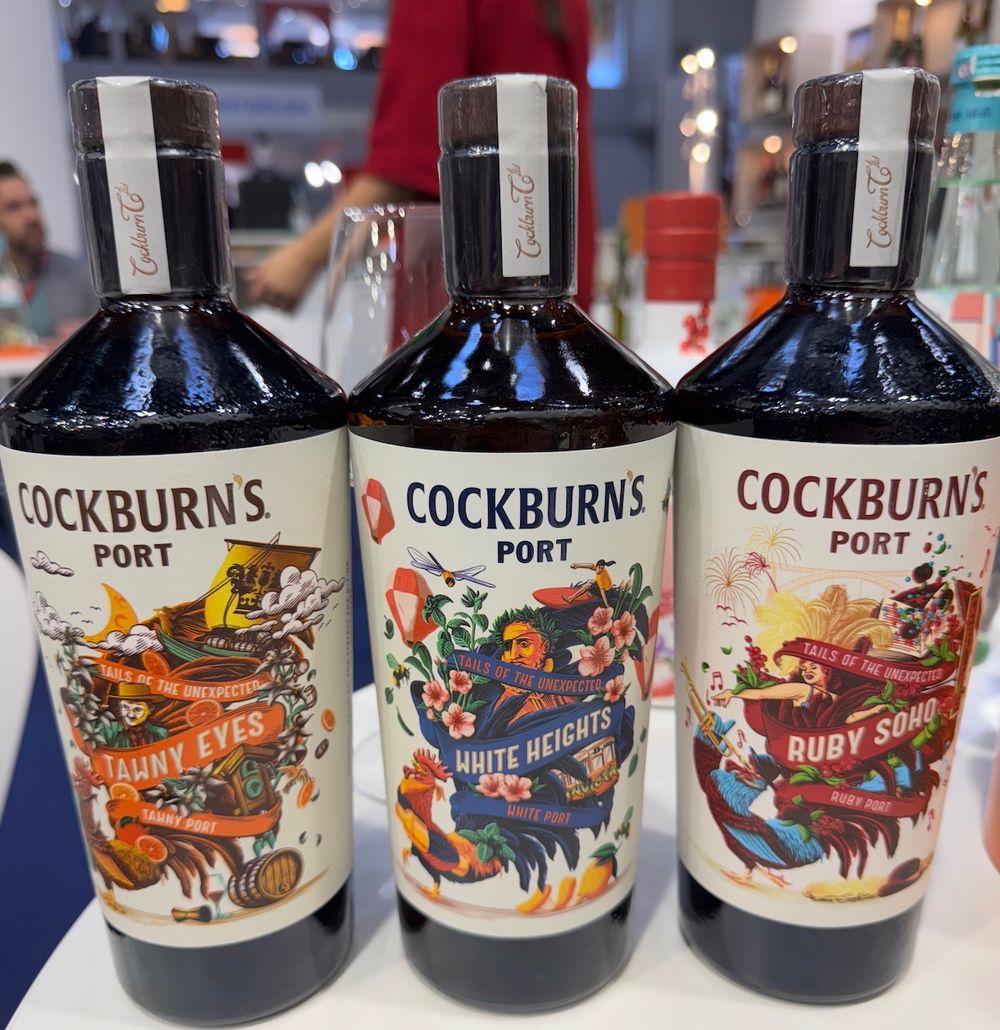
The Symingtons have introduced new designs for its Cockburn's range of Ports
It is also upgrading and premiumising its brands with new designs, imagery and branding and has been working with two of the best design agencies around, Stranger & Stranger and Denomination to help re-invent its key brands.
It turned to Stranger & Stranger to help re-invent its Cockburn’s range and the new branding now now features illustrations by artist, Song Kang, that “depict playful vignettes from the brand’s 200-year-old history” - and come in a lighter weight bottle too that claim to save over 430 tonnes of glass and 256 tonnes of CO2 annually.
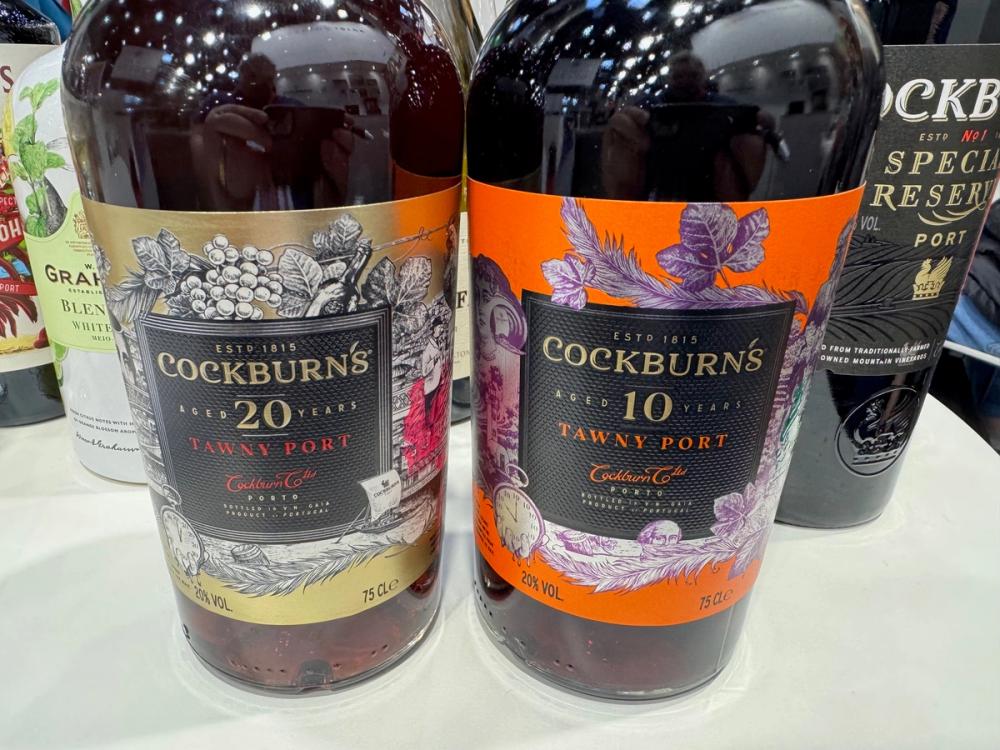
The new look is now featured on brand’s premium range, including Quinta dos Canais Vintage Port 2014, Late Bottled Vintage Port 2019 and 10 and 20 Year Old Aged Tawny Ports.
“It just shows what you can achieve with a bold design. It is about trying to change perceptions about the Port category,” he explains. “It is the right time to take some risks with some products and not others.”
Other significant changes to its Port range include the introduction of Graham’s Blend Nº5 that claims to be the first white Port blend made specifically for mixing in cocktails with an ABV of 19%. A move in keeping with cocktails trends around the world. The brand has been organising an annual mixology competition – in 2024 bartenders entered first rounds in 17 countries with the winners attending a grand final in Porto and the Douro. First rounds are already underway in 10 countries this year.
Hambledon breakthrough
There a whole load of “firsts” when it comes to the Hambledon project. It’s the first time the Symington family have looked to make wine outside of Portugal and it’s the first time that Berry Bros & Rudd has made wine at all.
“We are really enjoying the challenge,” is how Rob Symington describes the acquisition so far.
He says the partnership with Berry Bros came from a casual conversation with Lizzy Rudd whilst she was visiting the Symington family and enjoying a refreshing glass on the terrace overlooking the Douro. Together they started to talk about the idea of doing something together and the notion of making an English wine came up - and it all snowballed from there.
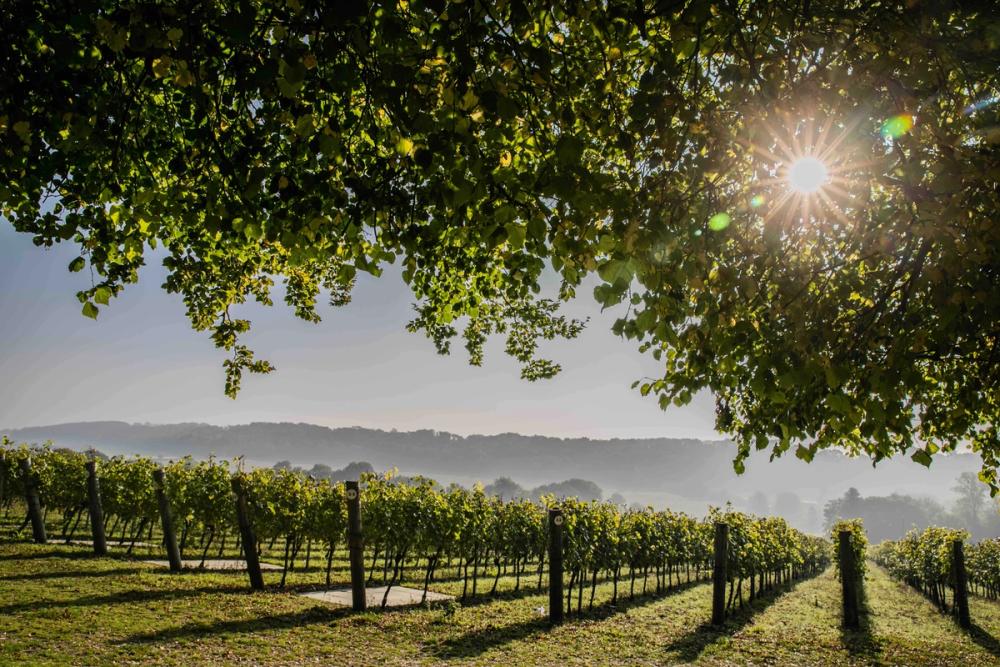
Hambledon in the South Downs in England will be the first time the Symingtons have made wine outside of Portugal
There are now grand plans to not only build on the already highly regarded credentials of the award-winning wines, but also to develop an extensive “Napa-style” hospitality experience at the winery - a high-end restaurant, cellar door shop and new tour & tasting experience has just opened at the vineyard.
“We want to play to our respective strengths,” is how Rob Symington explains it. “BB&R has a similar approach to business and we have learnt a lot from each other. It has been a breath of fresh air working together.”
The partnership is also paying dividends with a number of business deals and new contracts, including extending its existing Virgin Atlantic listing on its Upper Class wine list to being its welcome pour in the Upper Class cabin. It is also now on all the Pig Hotel wine lists.
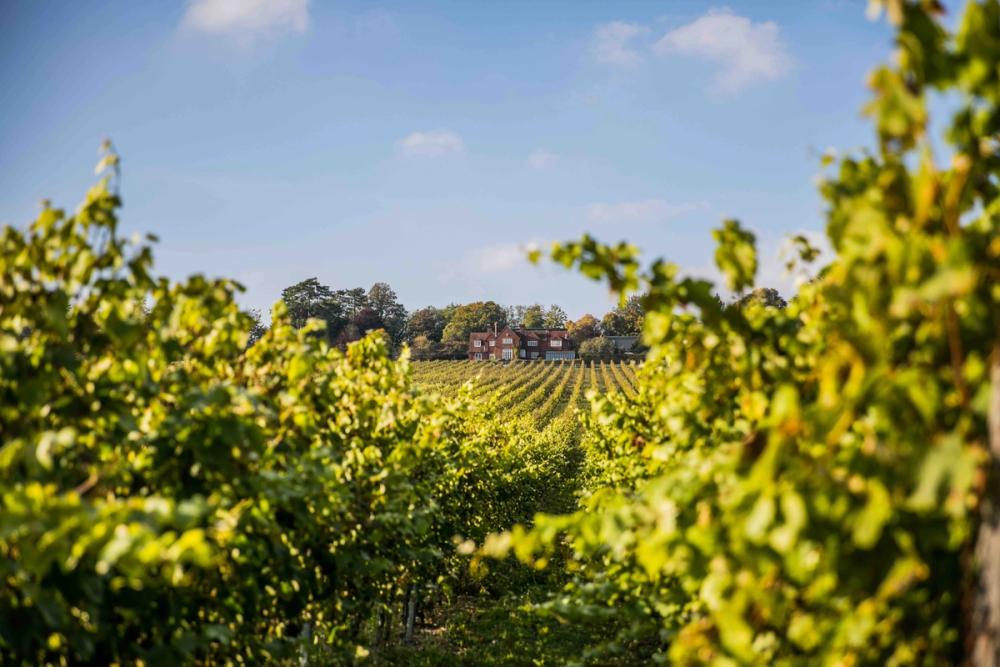
James Osborn joined the business last year to head up the new leadership team as managing director, with a long track record in the English wine sector having had previous roles at The Wine Garden of England, Squerreys Wine Estate and Tillingham. He was most recently part of the English wine consultancy team for real estate agency Knight Frank.
Sustainablity credentials
The Symington’s commitment to sustainability will very much continue under Rob Symington’s leadership. It has been a key part of his role since joining the business in 2017 and helping it to achieve B Corp status two years later. Its achievements are set out in its first Sustainability Report produced last year which details, in particular, the work it has done to not only improve its own sustainability but to protect the livelihoods of farmers and the wider community it supports.
The sustained sustainability steps it has taken saw its B Corp status re-certified with an improved score of 89 points in 2024, whilst in 2023 it became the first wine producer in Portugal to achieve the new Sustainable Winegrowing Certification, following a rigorous audit.
“Our B Corp status is the core of our sustainability strategy, and sustainability is at the core of our business strategy,” he explains.
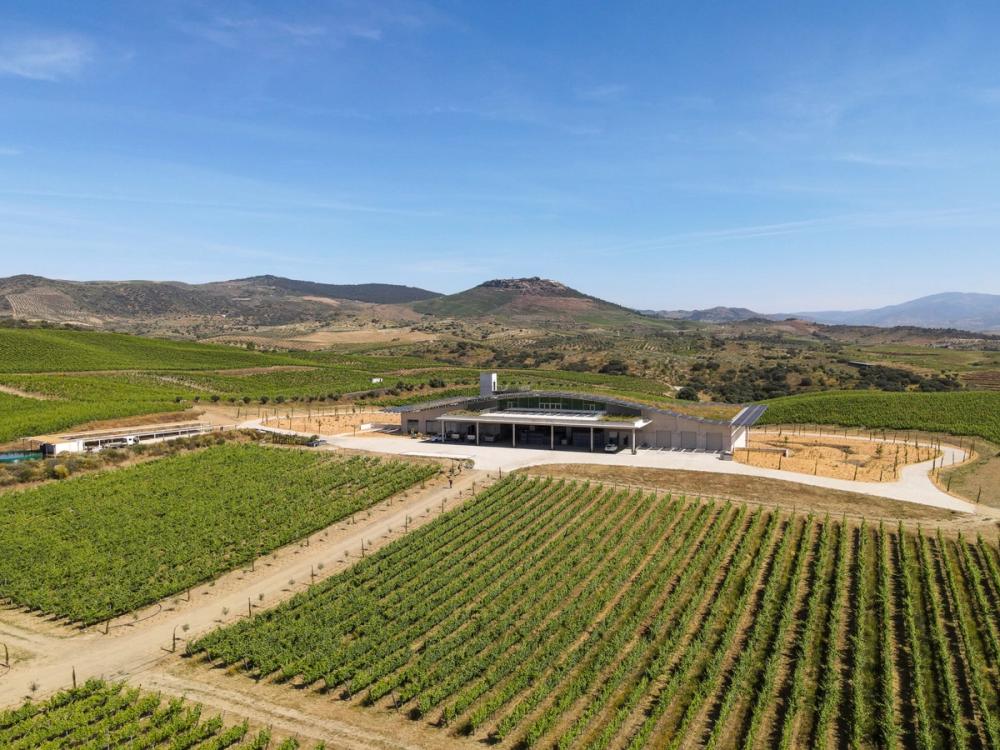
The fuly sustainable, gravity flow Adega do Ataíde
Its €12 million gravity flow Adega do Ataíde winery was also officially granted Leadership in Energy and Environmental Design (LEED) GOLD certification – making it the first in Europe to do so and only one in three around the world to reach that level of certification.
Destination Port
He is also understandably excited about the official opening of the much anticipated three-storey townhouse - Matriarca - which the family has been renovating for the last 18 months after acquiring the building during Covid. It will include a restaurant, wine bar, bottle shop, cocktail bar, roof terrace, wine academy, and wine club in one of the main squares in the city’s old town.
A €6m investment that is due to open this summer promises to be a major landmark for Port and wine lovers in the city. But Rob Symington is keen to stress this is not just about attracting some of the huge number of tourists now coming to the city: “We want it to be a place for locals too. We want it to be a cool destination to go to and certainly not a tourist trap.”
The first floor will have a wine bar and be a place for sharing plates, with a major restaurant on the second floor, with an events space for members, cocktail bar and a wine academy situated on the third floor leading up to a roof terrace.
All very much in keeping with the family’s overall objective to bring new and younger people into Port and change its profile and perception.
Its opening will clearly be a pivotal moment for the family and its place and role within the city. It will also be a significant step for Rob Symington - and the new leadership team - in cementing their position at the head of the family with their own vision for how they want to take the family name forward.
* To find out more about about the Symington Family Estates click here.









